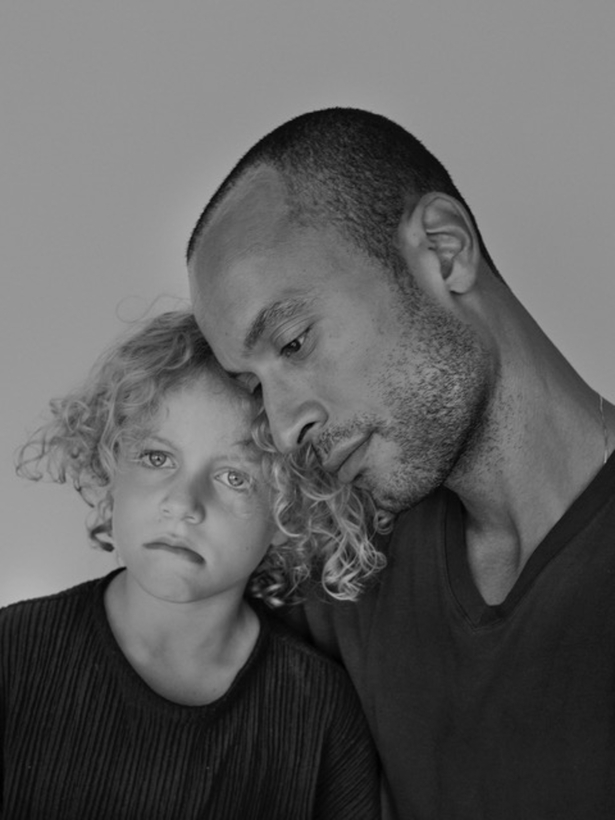In 2012, the bi-racial writer Thomas Chatterton Williams wrote an impassioned op-ed in The New York Times arguing that “mixed-race blacks have an ethical obligation to identify as black.” The piece noted the growing incidence of inter-racial marriage—nearly a quarter of black men marry non-black women—and discussed both his own recent marriage to a white Frenchwoman, and his intention to raise any children they might have as black. The migration of mixed-race blacks into forms of multi-racial identification could result, he suggests, in a “further stigmatization” of a “historically stigmatized group” as its “outwardly mobile” members “peel off at the margins and disappear into the multiracial ether.”
Williams refers to this op-ed, written a year before his wife, Valentine, got pregnant with his first child, as a “defiant last gasp of … something—some way of looking at the world—that I must have understood, whether I wanted to admit it or not, was under dire threat,” in his new book, Self-Portrait in Black and White. The oddly distancing and speculative mode that Williams adopts with regard to his own earlier feelings and motivations is striking. He describes himself wincing at the memory of the op-ed but does not quote from it and attempts no refutation of its argument. The refutation comes in visual form.
“The sight of this blond-haired, blue-eyed, impossibly fair-skinned child shocked me,” he writes. The shock of it is strong enough to annul his prior belief in the “one-drop” rule which holds that any admixture of black ancestry makes a person black, rendering that stance “ridiculous in my own eyes.” Before him Williams sees a white child that is his own, with everything that whiteness entails: both the fears he need not feel on her behalf because of it and the fears of his own annulment that his daughter’s white identity inspire in him. “On some deeply irrational but viscerally persuasive level,” Williams writes, “I think I feared that, like a modern Oedipus, I’d metaphorically slept with my white mother and killed my black dad.”
This evocation of the originary Western myth, wherein the tragic hero, in the very act of striving to evade an evil prophecy, winds up fulfilling it, is entirely apropos. For it is an open question whether in siring white children Williams has violated his father’s will or fulfilled his design; there is a sense in which he has perhaps done both. Williams’s father grew up in the Jim Crow South, where the psychic wounds he accrued imprinted on him the conviction that America was an “irredeemably racist” country. He met his wife, whom Thomas describes as “unambiguously white,” the year after the Supreme Court affirmed a constitutional right to inter-racial marriage, and eventually settled in the white side of a de facto segregated New Jersey suburb. His sons grew up having little contact with their extended black family, just as his wife’s own father, a stern old Baptist minister, estranged himself from his daughter and grandchildren. He nonetheless believes his sons to be black and often jokes that his wife has a “black consciousness.” He explodes into a fury, shouting, “I’ll be damned if they make you white!,” when a young Thomas demurs at the suggestion that he take up boxing. On the cusp of Williams’s wedding, his father tells him, “Son, don’t lose yourself.”

The deep ambivalence of these passages helps to explain why the post-racial discourse that Williams eventually adopts by the end of the book—announcing that he has “retir[ed] from race,” and urging his readers of every ethnicity to follow him there—holds out sufficient appeal to completely overturn all the reasons he gave in his 2012 op-ed to remain black. He does not want it to be the case that black outmarriage in general—or his own father’s outmarriage, or his own outmarriage—entails seeking after whiteness, though he is conscious that his light complexion, which causes him to be mistaken for an Arab—often by Arabs—in France, makes him less conspicuous in the all-white spaces where he increasingly finds himself, and where he increasingly finds himself at ease.
He notes that at the time of his wedding, nearly 7 out of 10 black women in America were unmarried, that black women are half as likely as white women to be married, that college-educated black women are more likely to be celibate than any other group. Williams wonders aloud why so many black men, including some well-known figures notable for their insistence on the primacy of blackness, marry outside of the race. Whatever the answer, it is clear that Williams is a transitional figure in a multi-generational family saga that begins in segregation and culminates in a blonde, blue-eyed child growing up in Paris.
Williams’s trajectory is not one of aspiring toward whiteness, which he has come to regard as a pernicious mystification that must be undone, but a movement beyond race itself. He is not seeking the white person’s priority over the black person—though he knows his daughter will benefit from it—but instead the abolition of such invidious distinctions entirely. Describing his father’s ready acceptance of his fiancée, Williams writes, “I think that what he saw between Valentine and me was a kind of freedom—a sovereign liberty to improvise and create the self without external constraints, which in truth he has always prized above just about everything.”
He summons up that cosmopolitan world beyond race while renting a country house in Provence, where “Blacks (of a variety of mixes), Jews, gentiles, Arabs, Asians, French-speakers (some with roots in the former colonies, some with the prefix ‘de’ in their family names), and plain-old Americans all passed through, all broke bread, all sipped the same wine.” He is not menaced by a neurotic anxiety that he is a token or a fetish object—he is “free and equal” in a way that other blacks will never be, as he puts it, so long as they can “be so easily triggered and provoked—so long as such barely submerged ancestral pain hovers just beneath the surface,” he writes, in a passage engaging with a moment in Ta-Nehisi Coates’s Between the World and Me, wherein Coates explodes at a white woman and makes a scene in which “my words were hot with all of the moment and all of my history”—this, because she pushed his young son and impatiently screamed “Come on!” at him in line at a movie theater.
When Williams sees a racist black figurine in his grandmother-in-law’s house, he eventually realizes that “the more I complain, the more I realize that I am also playing a role, willing myself, even, into some strange communion with an anger that exists somewhere outside of me—an anger that has never rightfully been my own.” When he accompanies his fiancée “to tell—not to ask—her father about our engagement,” he does so knowing that whatever the outcome of the exchange, “my dignity was not at stake.” Upon his arrival, he encounters nothing but welcome from a high-bourgeois Frenchman happy to accept into his family a black American man.
He is magnanimous with his own white relatives in whom he detects the simmering resentments that led to Trumpism, for in many ways his life has been easier than theirs. He empathizes with them and explains how being on the defensive around black people often serves as a barrier to friendly regard. In all of these statements, he plays a role of saying what the white person often cannot say.
By the end, he persuades the reader that the world beyond race is an attractive vision while offering scant reason to think that it will arrive anytime soon. But it is a welcome alternative to the daily racial micro-apocalypses that increasingly populate our news feeds.
Wesley Yang is a columnist at Tablet and the author of The Souls of Yellow Folk: Essays


